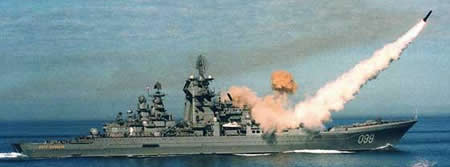Russian Nuclear Weapons Account Falls Short
 |
| A Russian brochure misrepresents the size of the Russian arsenal. Click image to download copy of full procure |
.
By Hans M. Kristensen
A brochure handed out by the Russian government at the ongoing nuclear Non-Proliferation Treaty Review Conference in New York appears to misrepresent the size of the Russian nuclear arsenal.
The brochure Practical steps of the Russian Federation in the field of nuclear disarmament includes a chart that lists the reduction in Russian strategic nuclear weapons under three arms control agreements and is intended to demonstrate Russia compliance with the NPT’s Article VI. The chart shows strategic warhead numbers for roughly five-year intervals in 1991-2017 and characterizes the numbers as the “actual quantity of nuclear weapons.”
But the numbers are not “actual quantities” of weapons but so-called aggregate numbers previously published in the Memorandum of Understanding exchanged by Moscow and Washington under the now expired START treaty.
| SS-27 Mod 2 (RS-24) |
 |
| The brochure lists more strategic warheads in 2012 than Russian missiles can carry. |
The aggregate numbers are inaccurate because they include so-called phantom weapons that were not operational at the time, and because they attribute a declared warhead number to each delivery platform rather than what is actually deployed. The aggregate numbers also do not include strategic warheads that are not counted as deployed.
The number for 2012 on the graph is curious because it lists 2,000 strategic warheads, the medium value of the 1,700-2,200 of the Moscow Treaty. But since Russia doesn’t count its strategic bomber weapons as deployed under the Moscow Treaty and the New START agreement only counts one warhead per bomber, practically all of the listed 2,000 warheads would have to be on ballistic missiles. Yet the ballistic missiles Russia is projected to deploy in two years don’t have enough warhead spaces for 2,000 warheads.
The Russian brochure also illustrates the reduction that has occurred in Russian tactical nuclear weapons, stating that the current inventory is 25% of what it was in 1991. But, again, Russia fails to disclose the real number, which is now at an estimated 5,000 warheads.
| Russian Non-Strategic Weapons Reduced |
 |
| The Russian brochure states that non-strategic warheads have been reduced but to what? |
.
The United States disclosed the size of its military nuclear weapons stockpile last week and has been declaring since 2006 how many of those warheads are deployed on ballistic missiles and heavy bomber bases. Russia should follow the American example and disclose the size of its nuclear weapons stockpile. Doing so would support Russian interests far better than outdated Cold War nuclear secrecy.
Ironically, Russia could have demonstrated deeper reductions had it listed its actual number of deployed strategic warheads instead of the aggregate numbers. Russia currently deploys an estimated 2,600 strategic warheads, significantly less than the 3,900 listed in the brochure. Transparency is better.
This publication was made possible by a grant from Carnegie Corporation of New York and Ploughshares Fund. The statements made and views expressed are solely the responsibility of the author.
The FY2026 National Defense Authorization Act (NDAA) paints a picture of a Congress that is working to both protect and accelerate nuclear modernization programs while simultaneously lacking trust in the Pentagon and the Department of Energy to execute them.
While advanced Chinese language proficiency and cultural familiarity remain irreplaceable skills, they are neither necessary nor sufficient for successful open-source analysis on China’s nuclear forces.
Satellite imagery has long served as a tool for observing on-the-ground activity worldwide, and offers especially valuable insights into the operation, development, and physical features related to nuclear technology.
This report outlines a framework relying on “Cooperative Technical Means” for effective arms control verification based on remote sensing, avoiding on-site inspections but maintaining a level of transparency that allows for immediate detection of changes in nuclear posture or a significant build-up above agreed limits.